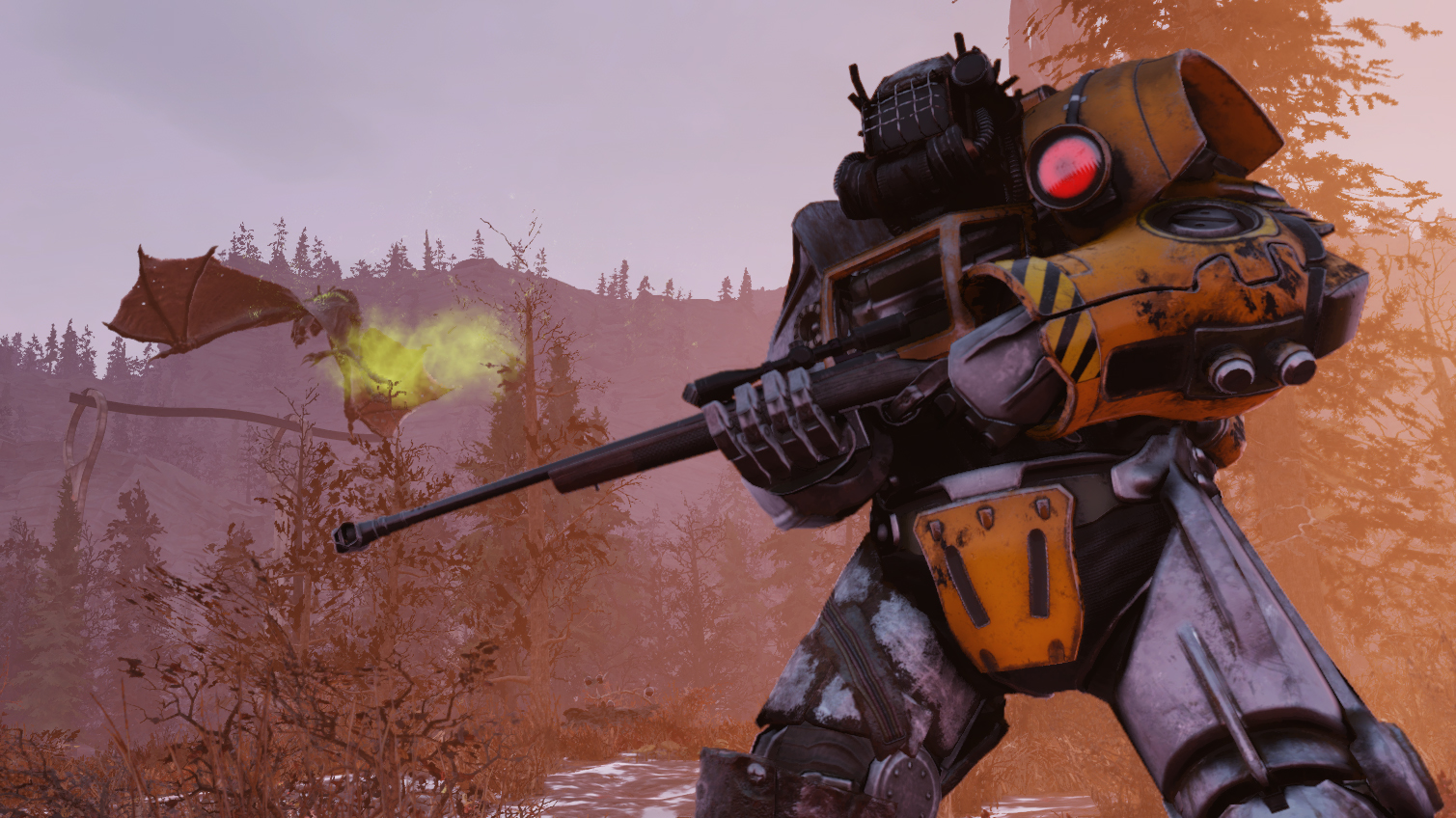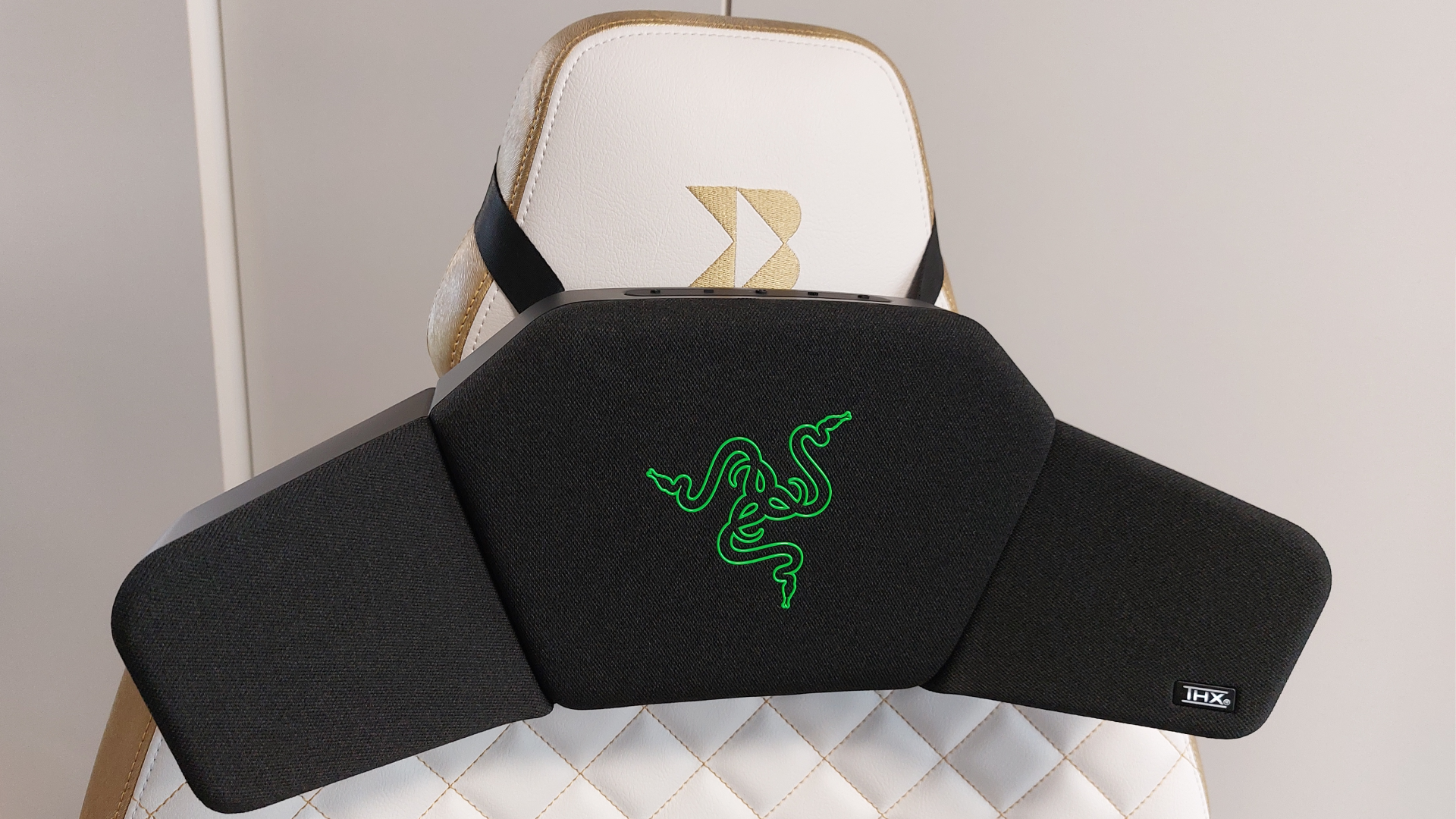Our Verdict
A beautifully crafted but ultimately repetitive world, and a disappointment when it comes to options on PC.
PC Gamer's got your back
What is it? An open world multiplayer RPG.
Expect to pay $60
Developer/Publisher Bethesda
Reviewed on Intel Core i5-6600K @ 3.50 GHz, 8 GB RAM, Nvidia GeForce GTX 980
Multiplayer Yes
Link Official site
Valley Galleria is a rotting shopping mall in Fallout 76, and one of the most eerie and unsettling places I've ever visited in a game. It's dark and spooky, with cheery music still faintly echoing through the grimy, decaying halls. It's my first time here and this place scares the crap out of me. I immediately drop into a crouch and ready my rifle, terrified of what unknown horrors I might find inside. I have a quest to complete here but now I'm too nervous to crabwalk more than a few feet at a time.
Cut to a few minutes later, and I'm jogging briskly through the Galleria, following my quest markers, my fear completely gone. The atmosphere of horror lifted when I discovered the mall was filled with Scorched, Fallout 76's less-interesting version of raiders, the same enemy type I've been killing since I first stepped out of the vault 50 hours ago. Now, I just slash them down with my spiked sword when they get in my way, and follow the yellow icons on my radar.
Fallout 76 is a lot like Valley Galleria. It's a fantastic and evocative setting for a game, but the novelty of its sights disperse quickly and you're back to following quest markers and absentmindedly killing the same crowd of monsters, again and again.
Chasing ghosts
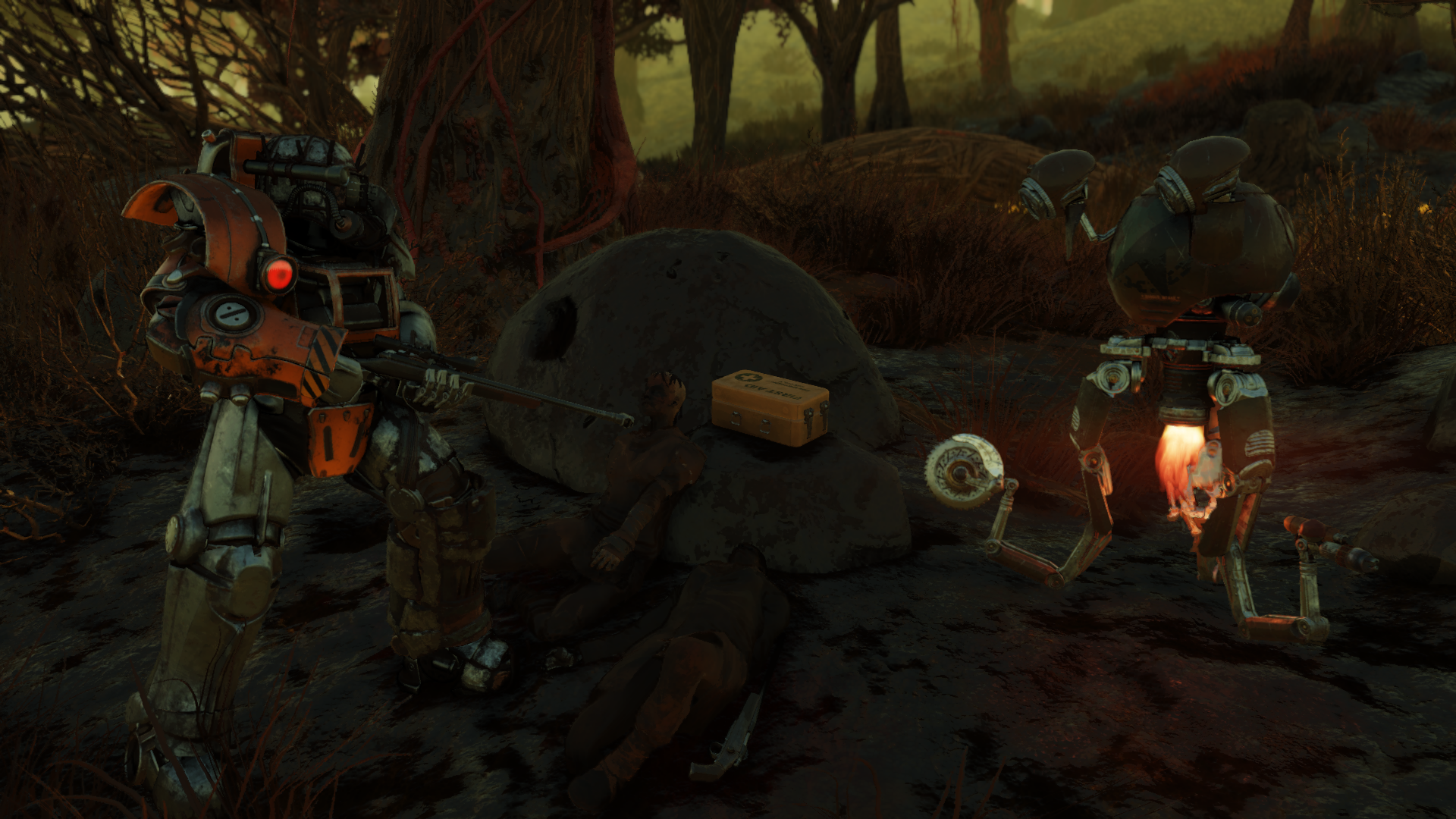
25 years after the nukes fell during the Great War, Vault 76 opens and you step out into post-apocalyptic West Virginia to find out what happened to your vault's Overseer, who set out before you. You're not alone: the other two-dozen players on the server represent the only living humans in what's left of Appalachia. The rest of the population are dead, or robots, or have been monsterified, meaning your quests and the story exclusively come from notes, diaries, a few extremely talkative bots, and holotapes. I'm not a fan of most of the voice acting in Fallout 76, in particular one raider robot who will dominate your headphones for a large portion of your mid-level questing—the most irritating robot in a videogame since Claptrap. But the smaller stories, written in terminal entries and typically inconsequential to the main quest, are often well worth nosing around for.
Sometimes they lead to side quests, usually requiring bouncing around a few different locations and killing the enemies you find there, but there's a lot of strong world-building, explaining how the various factions were established and began to war against each other. There are interesting personal tales to be discovered and pieced together, too, and mysteries to solve. I've investigated a child abduction cold case, I joined a secretive costumed crime-fighting guild, and nosed around in the email of politicians and businessmen. Sometimes I miss talking to NPCs as in singleplayer Fallout games, and I would have liked meeting some of these diary writers in person—the fact that everyone is already dead definitely detracts from the drama and urgency. But in most cases I'm perfectly happy reading the history of the region, its conflicts, and the trials and tribulations of its long-dead population.
Reclamation declaration
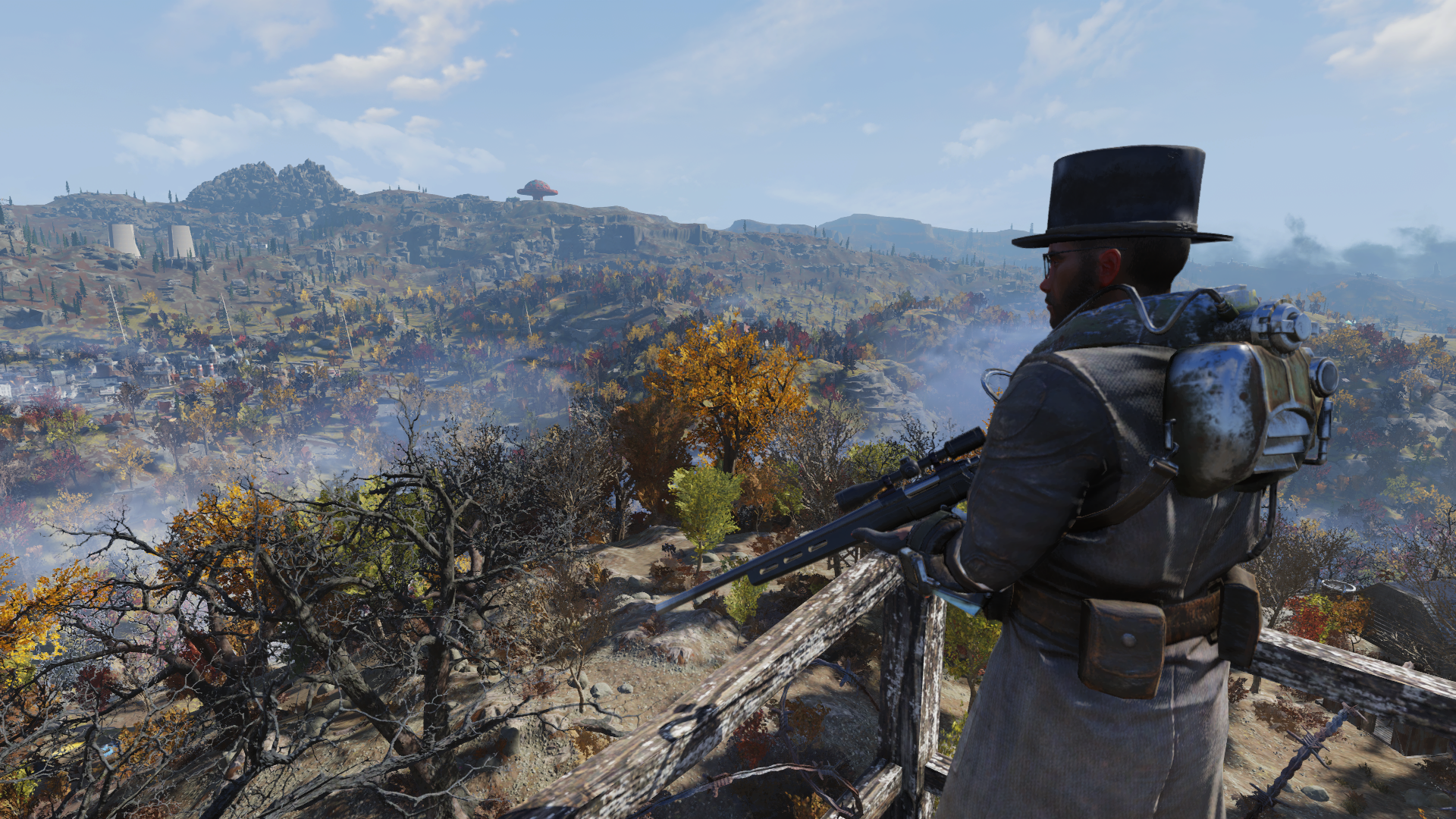
Fallout 76 is a shockingly big and beautiful world to explore. When first stepping out of Vault 76 you're in a heavily wooded mountainous region where the buildings are gently rotting but not completely devastated by nukes. The further out you travel, the harsher and deadlier the world gets, from the chemically blasted lands up north to the toxic air of the mining and industrial zones in the south. Cranberry Bog, overgrown with oppressive plantlife and foggy swamplands, feels completely otherworldly, separated from the rest of West Virginia by the Savage Divide, a wartorn strip of land filled with angry robots and growling molemen.
As quests and exploration move you back and forth across the map, though, repetition begins to set in
Along with major points of interest like the robot-staffed Whitespring Resort, the remnants of a crashed space station, and the devastated capitol building, there are plenty of small but fun locations to uncover. There's a haunted lodge where the pictures spin on the wall, doors slam, and chilling screams can be heard. In a church where it appears some grim deity was being worshipped, skeletons are still sitting in the pews, a drinking glass next to each while a beverage pitcher and a box of rat poison rest on the altar. There's a tourist attraction called Uncanny Caverns where you can take an audio tour and learn all about Night Kid (based on tabloid legend Bat Boy) and there's a carnival where you can partake in a hotdog eating contest—the contest being, can you eat some extremely old hotdogs?
A lot of effort has gone into making this human-free world an interesting one, and it is: nearly every excursion I make leads to some fun or gruesome or interesting discovery. As quests and exploration move you back and forth across the map, though, repetition begins to set in. Infiltrate a building once and it's fun to wipe out all the monsters inside. Visit it again a little later, sometimes even just minutes later, and it will be completely repopulated. I sigh when I see a mission sending me to a location I'd discovered earlier: fighting the same crowd of scorched or ghouls or robots in the same places time after time gets old, and even the best locations lose their wonder as a result. For a week my home base was located in a great spot at the top of a cliff, but three mole rats spawn there, and every single time I'd return to my base they'd spawn again. I killed (and ate) those damn same three rats probably 30 times in a week. I eventually moved.
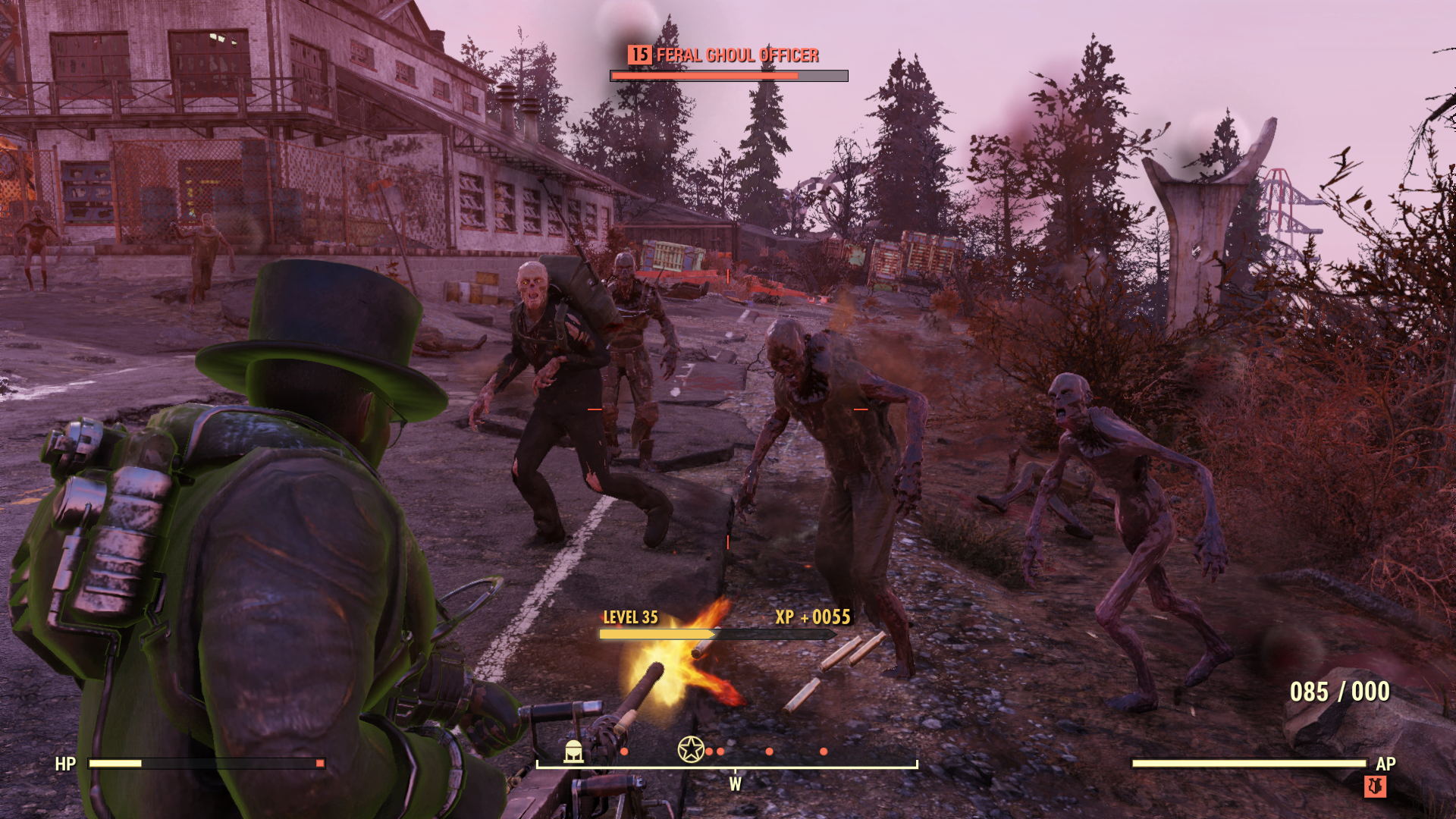
I know enemies have to repopulate or there wouldn't be much to do in an online game, but the common mobs of scorched and protectrons and gurgling ghouls just aren't that interesting to fight the first time, let alone the 30th. At least there are a few rarer monster types, like the mythical mothman, the wendigo, the flatwoods monster, and that awesome big-ass hermit crab who uses a truck for a shell. Their infrequent and often startling appearances, and the fact that they do more than just run at you in a straight line, are a welcome relief to the unending parade of common monsters you'll face at every turn.
War never changes
Combat in Fallout games has always been more about chaotic spectacle than precision, and it remains mostly unchanged in Fallout 76. VATS is quite different, though still useful at times, such as when trying to target bobbing blowflies or lunging molerats at your feet. The bullet-time effects aren't possible in an online game so the cinematic flair is completely absent.
But even without slow-motion, it's still a hoot blasting mirelurks in the face with a 50 cal machine gun, laying a trail of proximity mines down and watching them eat away at a charging deathclaw's health, bashing a super mutant with a sword crafted from a ski and covered with jagged metal spikes, or throwing a grenade that detonates near a wrecked car, which explodes into a mini-mushroom cloud and sets off four other cars. I have a black powder rifle I'm completely in love with: it takes forever to reload, but the lead balls it fires take down most enemies with a single shot and the cracking boom when I fire it outdoors rolls over the landscape for what feels like an entire minute.
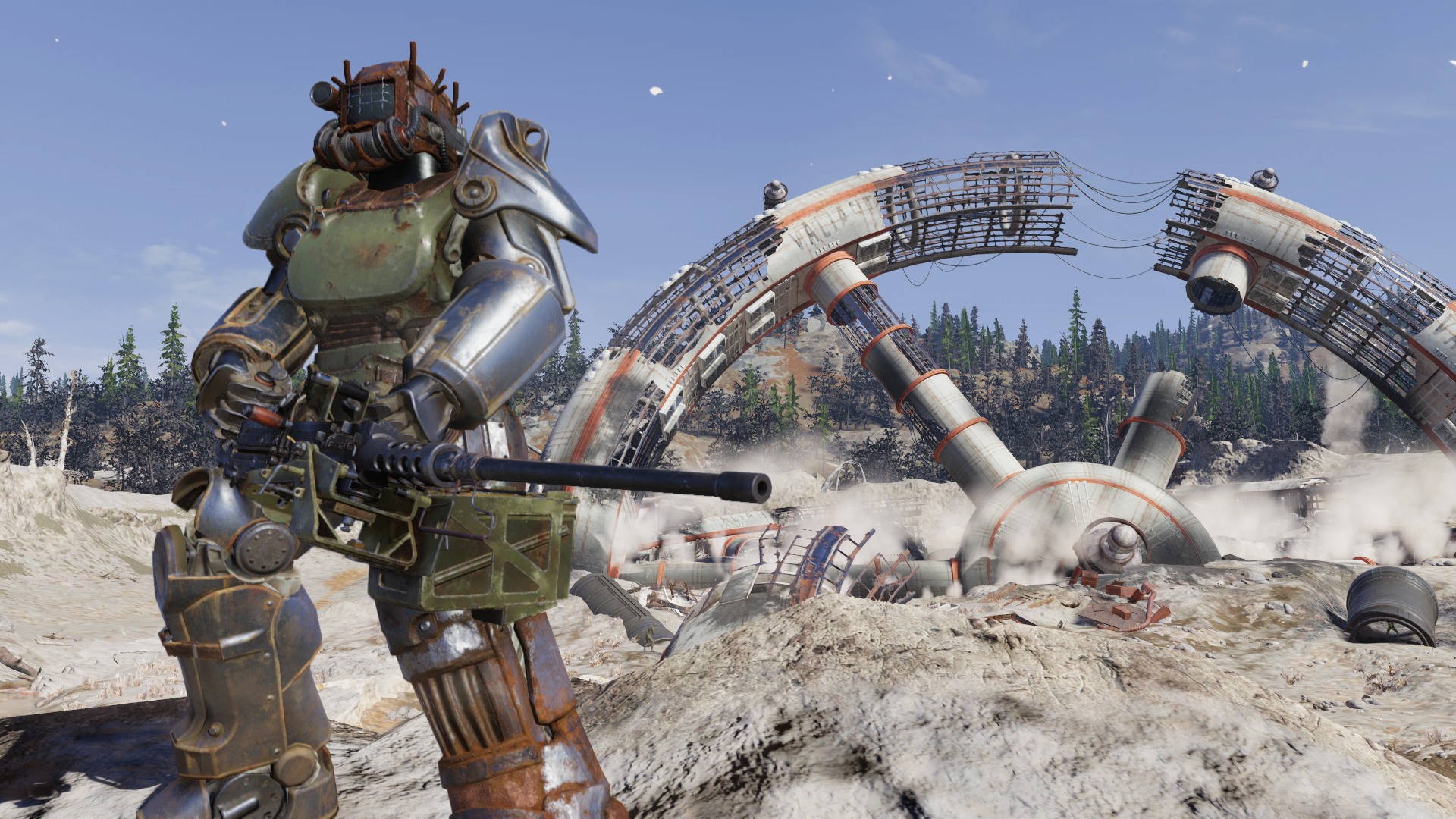
Adjusting the lighting quality in Fallout 76 could have the biggest impact on how it runs. Read about the different graphics settings, which you can adjust for potential performance gains, how to edit ini files, and how Fallout 76 runs on different GPUs here.
All those wonderful weapons need lots of attention, too: they degrade and break, as does your armor. There are workbenches scattered over the map, and you can build your own benches at your movable camp. All this tinkering can get a little tiresome when you're just a couple units short of screws, springs, or aluminum, forcing you to skulk once more through nearby buildings to raise the materials you need. But as your crafting skills grow and you unlock more recipes, it becomes a joy to cobble together weapons from scratch and upgrade your gear, squeezing a few extra points of damage from an improved receiver or adding a recon scope to your favorite rifle. You can also claim public workshops around the map and set up resource extractors, blessedly lessening the amount of time you need to spend looting and scrapping junk.
Frenemies

This casual approach to co-op makes Fallout 76 a great hangout experience
I've played a lot of Fallout 76 solo, which is mostly doable with the exception of public events designed around groups and the occasional blunder of winding up toe-to-toe with a powerful monster. It's a relief so much of Fallout 76 can be tackled alone, and in some cases it's actually better that way: all that reading and listening to the story is easier without carrying on a conversation with friends at the same time.
But I've teamed up with pals and strangers, and not only is it a fun way to explore and fight, it doesn't stop you from going your own way. Being on a team doesn't mean you need to be your partner's constant wingman: you can spread out as far as you like, travel on your own anywhere you want, and quickly rejoin them via fast-travel when you want or need to. This casual approach to co-op makes Fallout 76 a great hangout experience, a way to play solo and in a group at the same time. Even joining an event with complete strangers is great, not just to pick up some quick XP or get some backup in a tough fight, but to see what kind of gear they're packing, what they're wearing, have a chat, or offer a trade.
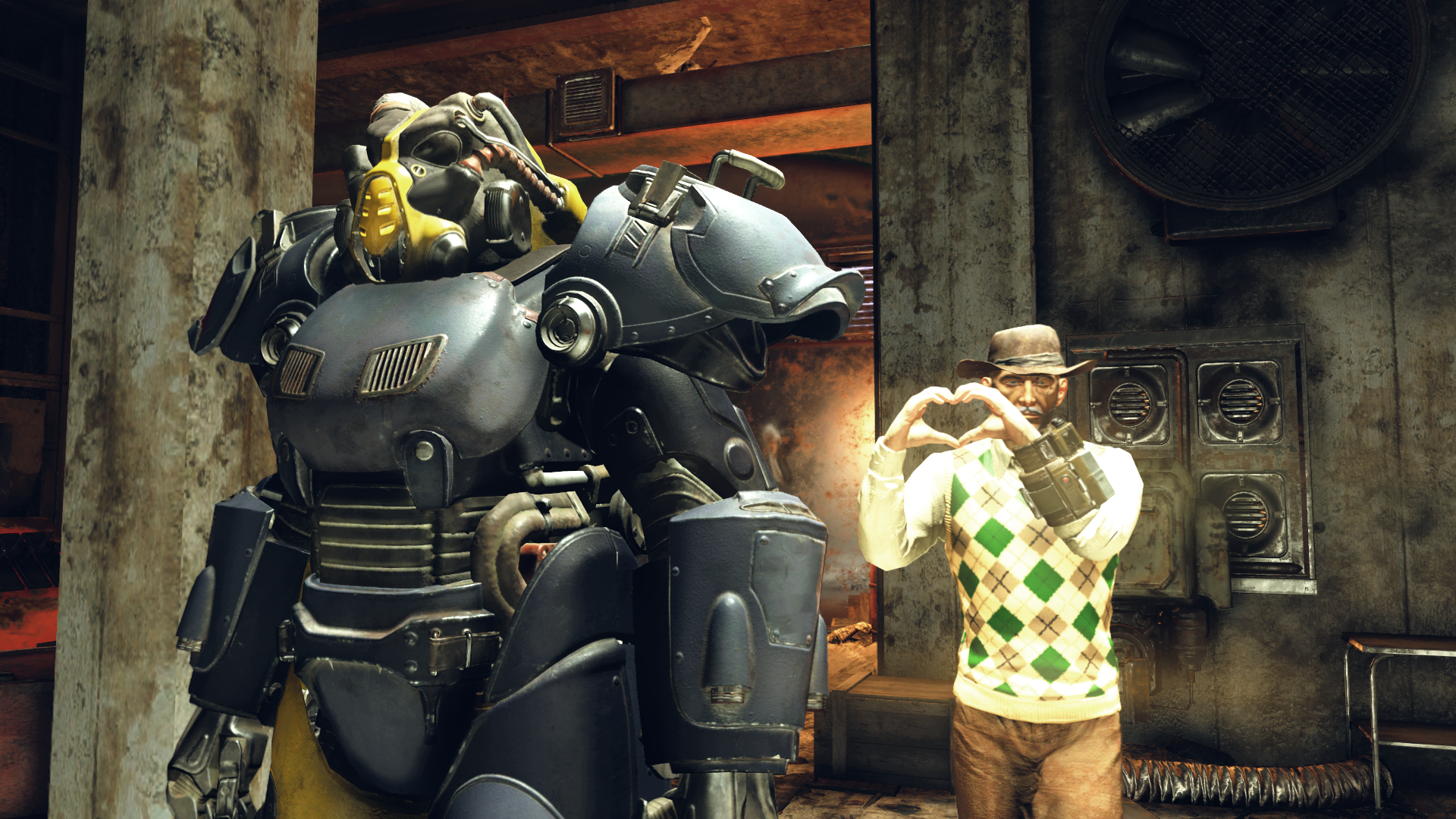
You can also fight other players, but standard PvP is extremely watered down. Shooting another player barely hurts them at all unless they deliberately engage in combat, so both players essentially have to agree on the battle before it begins. It's an OK solution to the griefing problem, but that's a problem Bethesda created itself by not providing PvP and PvE-only servers. You can also instigate combat with someone by claiming another player's public workshop, but in my 50 hours of play no one has ever tried that with me. When I spent an afternoon doing nothing but claiming owned workshops, only once did the owner show up to defend it. The only loot gained after killing someone is the junk they've collected, which isn't hard to replace, and with such low stakes few players seem to even bother with PvP.
There's no designated social hub for players to meet, trade, or team up
Bounty hunting, however, provides an ideal PvP mode. Players can become wanted when they repeatedly attack someone who doesn't defend themselves, or when attacking another player's base, or even stealing from a claimed public workshop. When a player is wanted, their location is displayed on the map but they can't see anyone else's location. The bounty grows the longer it's unclaimed, adding some financial stakes, and stalking and hunting real players instead of just predictable AI enemies adds a lot of tension. Being on the other side of the bounty is nerve-wracking, too, knowing another player (or players) might be tracking you down. The only issue with bounties is that it's relatively rare to find anyone willing to become an outlaw in the first place. Shame, because it's one of my favorite parts of the game.
Another shame: there's no designated social hub for players to meet, trade, or team up, which is odd for a multiplayer RPG. Vault 76 itself would make an ideal hub, but once you leave the vault you can't get back in (which also feels like a waste of a nicely designed interior space). And with no global text chat, and player bases not shown on the map, there's not even a way for players on the same server to arrange their own informal hub without tracking everyone down individually and inviting them.
Terminal illness
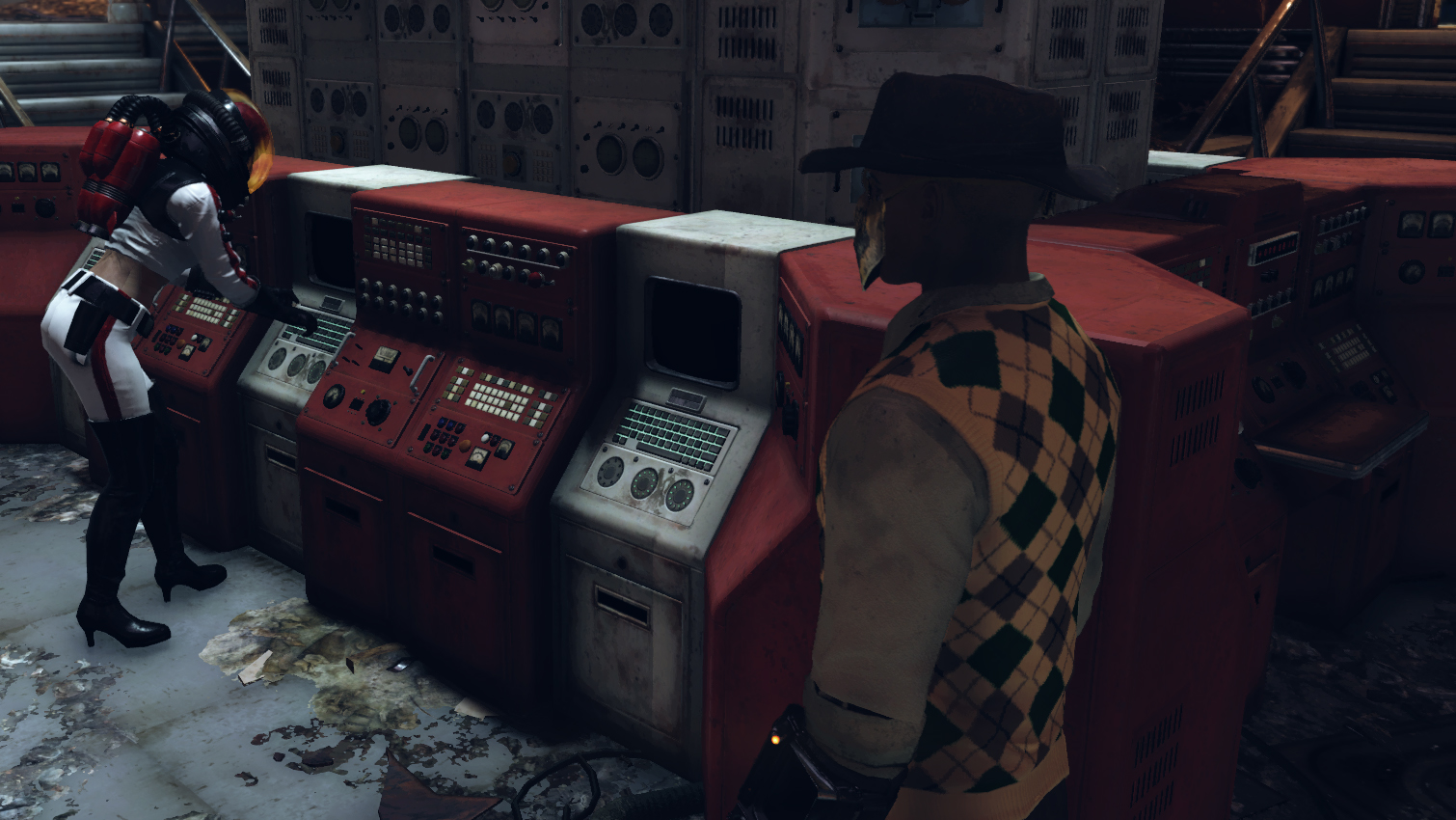
Fallout 76's menus, since they've been designed for controllers and consoles, are awful to navigate on keyboard, and this being a Fallout game with inventory management and base building and crafting and trading, I've had to completely retrain my fingers to learn the awkward control scheme. Sometimes you can scroll with the mouse wheel, sometimes you can't. Some menus are closed with Escape, some with Tab. Custom keymapping is incomplete, and multi-purpose keys aren't well thought-out. For example, R is reload but it's also used to transfer inventories between the player and a container, and when enemies die they instantly become containers. Numerous times while trying to reload during a fight with ghoul mobs, I've pressed R only to open the inventory of the nearest dead ghoul rather than reload my shotgun.
Basic features, such as the option to disable settings like motion blur or depth of field, are missing from the menu and instead require the editing of ini files. There's no text chat, a complete hindrance for deaf or hard of hearing players and discouraging for those who simply don't want to speak over their microphones. Bethesda has begun to address some of the PC version's issues and says push-to-talk and ultrawidescreen support are coming soon, but it's hard to understand why they weren't included to begin with.
I've gotten inconsistent performance out of Fallout 76 when playing with a Nvidia GeForce GTX 980 at 1920x1080. Plunges from a smooth 60 fps into low digits seem random. Certain busy areas run beautifully, others turn Fallout 76 into a slide show, even after a recent patch to address fps hitches. And just tinkering with settings is frustrating because a change to any of them requires a complete restart of the game.
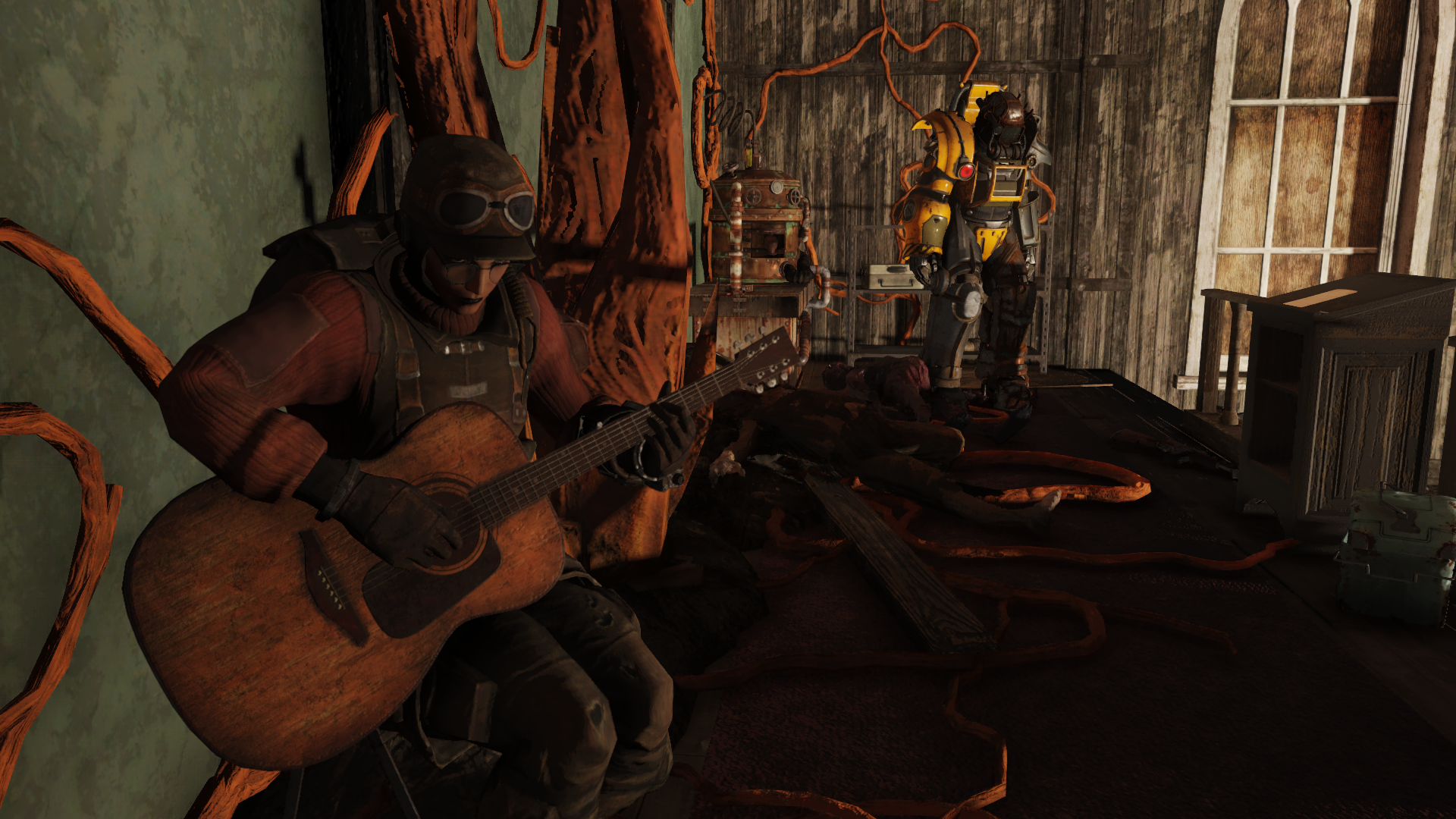
The PC version of Fallout 76 is genuinely disappointing
There are also plenty of bugs: quest markers not showing on maps or pointing to the wrong spot, broken animations, AI misfires and poor enemy pathfinding, and more. The PC version of Fallout 76 is genuinely disappointing, which is even more troubling because modders, who for years have dedicated themselves to tweaking and fixing issues with Bethesda's RPGs, probably won't be able to help.
Despite the considerable issues with the PC version, I've still had long stretches of fun with Fallout 76. I really wish PvP had more at stake than lost junk (or at least more willing participants) but the world retains a lot of what I love about Bethesda's previous RPGs with finely crafted environments, enjoyable weapons and crafting, and surprising little scraps of story to uncover and investigate. Like Valley Galleria, though, it doesn't take long to for the shine to fade, the once-fascinating areas to lose their wonder among the mobs of identical enemies I've killed there time and time again.
A beautifully crafted but ultimately repetitive world, and a disappointment when it comes to options on PC.

Chris started playing PC games in the 1980s, started writing about them in the early 2000s, and (finally) started getting paid to write about them in the late 2000s. Following a few years as a regular freelancer, PC Gamer hired him in 2014, probably so he'd stop emailing them asking for more work. Chris has a love-hate relationship with survival games and an unhealthy fascination with the inner lives of NPCs. He's also a fan of offbeat simulation games, mods, and ignoring storylines in RPGs so he can make up his own.
